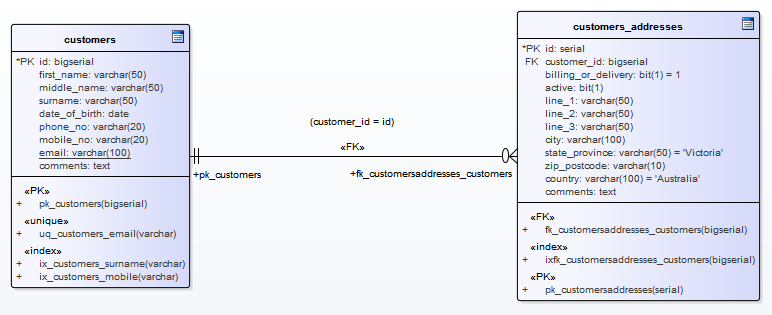| Prev | Next |
Database Tables
Tables are the fundamental components of a relational database, representing multiple rows of structured data elements (referred to as Columns). Every individual item of data entered into a relational database is represented by a value in a column.
Enterprise Architect's UML Profile for Data Modeling represents:
- Database Tables as UML Class objects with a stereotype of <<table>>
- Table columns as UML attributes of a Table, with a stereotype of <<column>>
- Primary Keys as UML operations/methods of a Table, with a stereotype of <<PK>>
- Foreign Keys as UML operations/methods of a Table, with a stereotype of <<FK>>
- Indexes as UML operations/methods of a Table, with a stereotype of <<index>>
- Unique Constraints as UML operations/methods of a Table, with a stereotype of <<unique>>
- Check Constraints as UML operations/methods of a Table, with a stereotype of <<check>>
- Table Triggers as UML operations/methods of a Table, with a stereotype of <<trigger>>
Enterprise Architect refers to all of the UML operations of a Table collectively as Constraints, hence the screen you use to maintain a Table's UML attributes and operations is called the Columns and Constraints screen.
Example
This simple example of a Physical Data Model diagram in Enterprise Architect consists of two Database Tables represented by UML Classes, named customers and customer_addresses.

Each Table defines database columns, using UML attributes typed appropriately for the target DBMS (in this case, PostgreSQL).
Notes
Learn more

